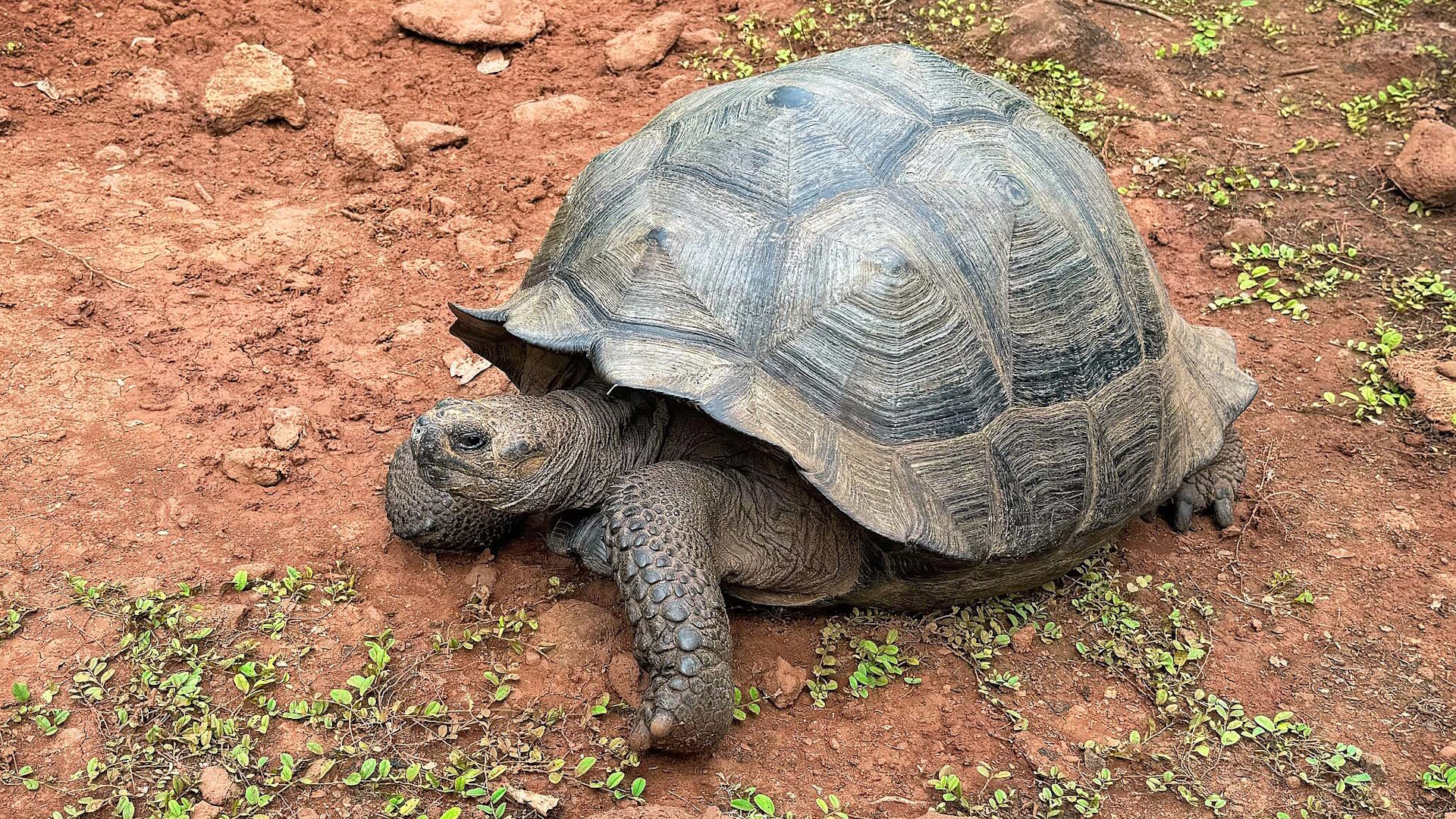Throughout human history, animals have played significant roles in our spiritual and cultural narratives. Among these revered creatures, turtles hold a special place in many societies around the world. With their ancient lineage dating back over 220 million years, turtles have inspired awe, respect, and spiritual significance across diverse cultures. Their longevity, resilience, and distinctive characteristics have led many civilizations to view them not merely as animals, but as sacred beings carrying profound symbolic meaning. From creation myths to contemporary religious practices, turtles continue to embody wisdom, protection, longevity, and cosmic significance. This article explores the fascinating ways turtles have been venerated in different cultures and examines why these remarkable reptiles have earned their sacred status.
The Cosmic Turtle in Hindu Mythology
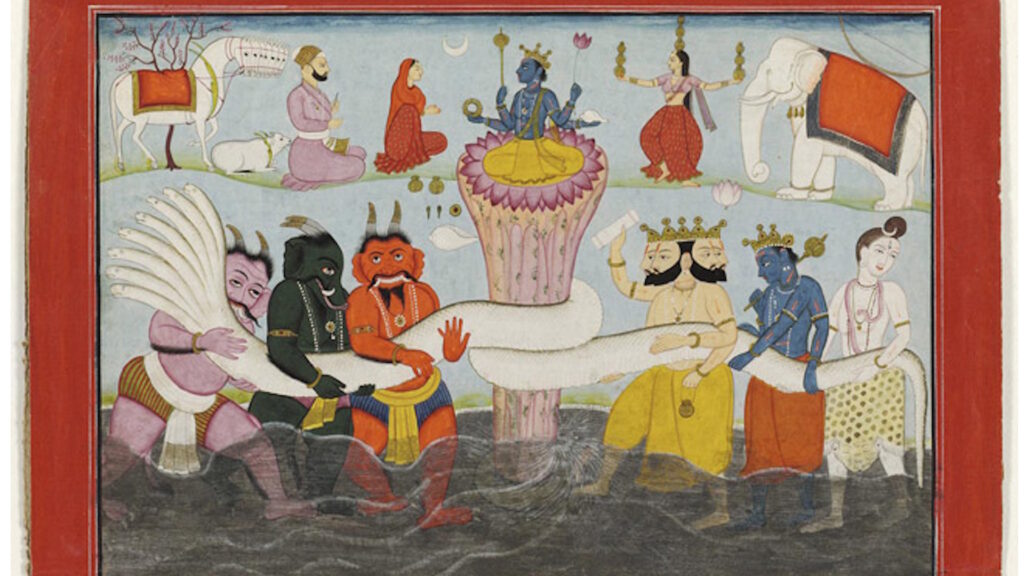
In Hindu mythology, the turtle occupies a position of supreme cosmic importance. According to ancient texts, the second avatar of Lord Vishnu is Kurma, who takes the form of a giant turtle to support Mount Mandara during the churning of the cosmic ocean. This pivotal event, known as Samudra Manthan, resulted in the creation of numerous divine treasures including the elixir of immortality (amrita). The turtle’s role as the stable foundation upon which this cosmic activity occurs symbolizes the creature’s association with strength, stability, and cosmic order.
In some interpretations, the turtle’s shell represents the dome of the sky, while its underside represents the flat earth, making it a living embodiment of the cosmos itself. Even today, in many Hindu practices, the turtle is considered a sacred animal and harming one is considered inauspicious.
World Turtle Myths and Creation Stories

The concept of the “World Turtle” or “Cosmic Turtle” appears in numerous creation myths across cultures, particularly in Native American, Chinese, and Hindu traditions. Many indigenous North American tribes, including the Lenape and Iroquois, believe that the world rests on the back of a giant turtle, leading to North America sometimes being referred to as “Turtle Island.” In these traditions, the turtle is viewed as the foundation of creation, supporting the weight of the world and all its inhabitants.
The pattern on a turtle’s shell, divided into sections, is often interpreted as representing the 13 moons of the lunar calendar by some tribes. This cosmological significance elevates the turtle beyond an ordinary animal to a fundamental element in understanding human existence and our place in the universe.
Sacred Turtles in Chinese Culture
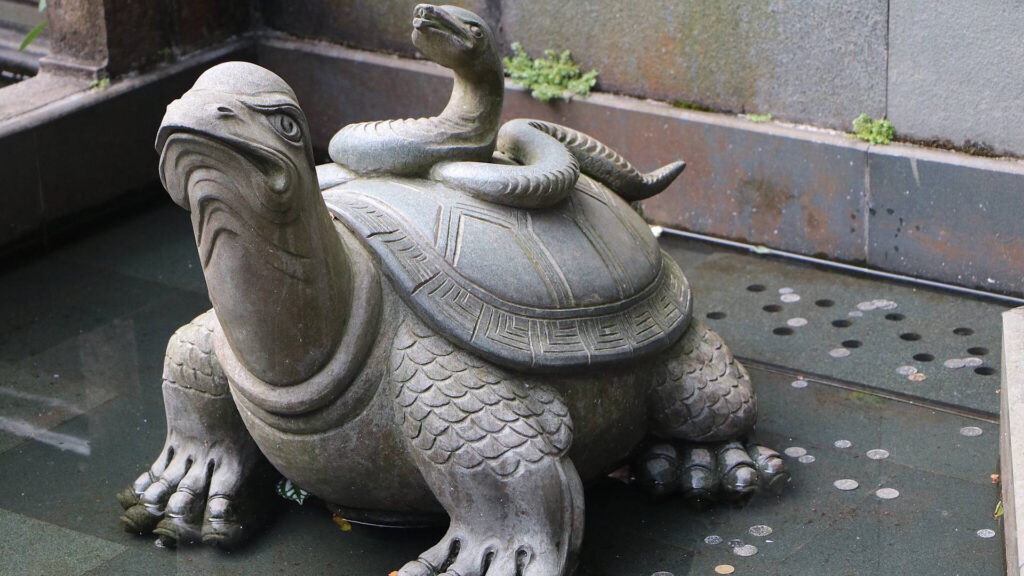
In Chinese culture, the turtle (gui) holds profound spiritual significance as one of the Four Sacred Animals, alongside the dragon, phoenix, and qilin. The Black Turtle, also known as the Black Warrior, represents the north and the winter season in Chinese cosmology. Turtles are powerful symbols of longevity, wisdom, and endurance, with their long lifespans making them natural emblems of immortality.
The practice of turtle shell divination dates back to the Shang Dynasty (1600-1046 BCE), where oracle bones, often turtle plastrons, were inscribed with questions for the ancestors or deities, heated until they cracked, and then interpreted by diviners. This practice formed the basis for the earliest known Chinese writing system. Even today, turtle statues are commonly placed in gardens, homes, and businesses to attract good fortune and longevity.
Turtles in Native American Spiritual Traditions

Beyond the creation myths, turtles hold diverse and profound meanings across many Native American tribal traditions. The turtle’s shell with its thirteen large scutes is often associated with the thirteen moons of the year in many tribes, connecting the creature to time, cycles, and feminine energy. For the Ojibwe people, the turtle clan (Mikinaak Dodem) is known for its wisdom and healing knowledge, with members often serving as mediators and keepers of medicinal traditions. Some tribes view the turtle as a symbol of Mother Earth herself, representing patience, fertility, and protection.
Turtle effigies and symbols appear throughout Native American art, ceremonial objects, and storytelling, demonstrating the creature’s enduring cultural significance. Many traditional ceremonies involve turtle rattles or drums, using the shell’s natural resonance to create sounds believed to connect the physical and spiritual worlds.
The Sacred Black Softshell Turtle of Bangladesh
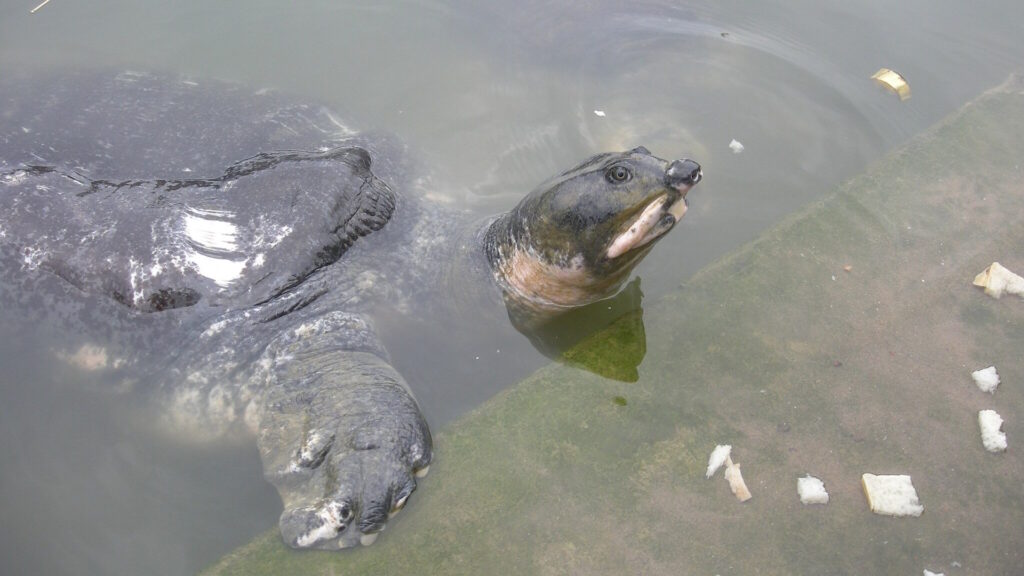
The Black Softshell Turtle (Nilssonia nigricans) provides one of the most striking examples of a turtle species considered directly sacred in contemporary religious practice. These rare turtles inhabit the pond of the Bayazid Bastami shrine in Chittagong, Bangladesh, where they are believed to be the reincarnations of human souls. Local devotees consider it their religious duty to care for and feed these turtles, and harming them is seen as a serious taboo. This religious protection created an unusual conservation scenario where this critically endangered species survived in this sacred pond even as wild populations declined dramatically.
In recent years, conservation efforts have partnered with religious authorities to establish breeding programs that respect the turtles’ sacred status while helping to restore wild populations. This case illustrates how religious veneration can sometimes contribute to species preservation in unexpected ways.
Japanese Perspectives on Sacred Turtles
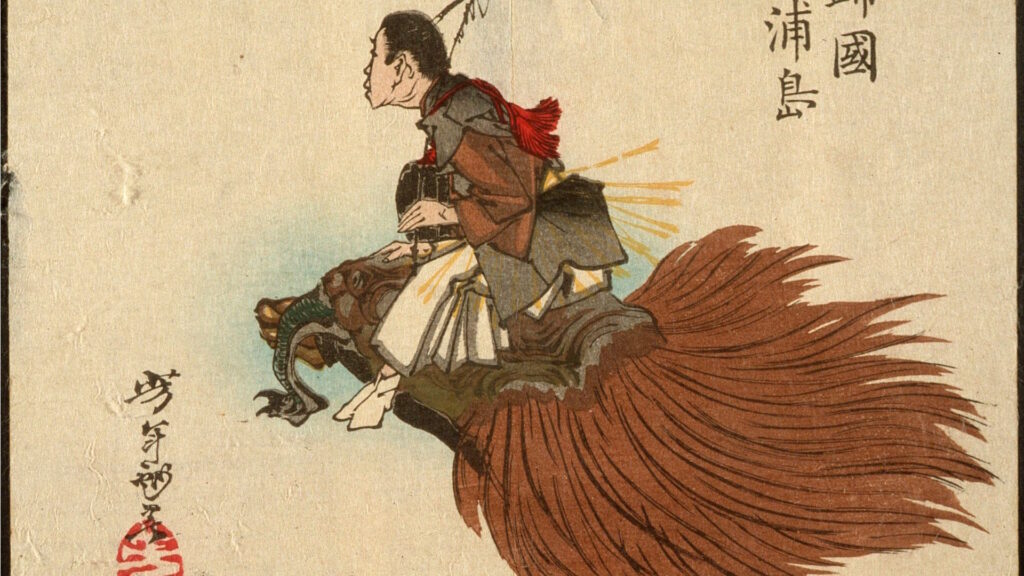
In Japanese culture, the turtle (kame) represents good fortune, longevity, and support through difficult times. Japanese mythology features Genbu, the Black Tortoise, one of the Four Symbols of the Chinese constellations that was incorporated into Japanese cosmology. The turtle’s connection to longevity is reflected in the legendary Minogame, a turtle that lives for ten thousand years and grows a tail of seaweed. This mythical creature appears frequently in Japanese art, including ukiyo-e prints, netsuke carvings, and temple decorations.
In some Shinto practices, turtles are considered yorishiro—objects capable of attracting and containing spirits or kami. The island of Kuroshima in Kagoshima Prefecture is sometimes called “Turtle Island” due to the large population of sea turtles that nest there, and these turtles are protected partly due to their cultural significance.
The Turtle in Mesoamerican Symbolism

Among ancient Mesoamerican civilizations, particularly the Maya, the turtle held significant symbolic value associated with earth, water, and the underworld. The Maya believed that the earth itself rested on the back of a giant turtle floating in the primordial sea. Many Maya artifacts depict deities emerging from turtle shells, symbolizing birth and creation. The association between turtles and rainfall is particularly important, as turtles were seen as bringing life-giving water from the underworld to nourish crops.
In the famous Madrid Codex, one of the few surviving Maya books, turtles are depicted in connection with agricultural cycles and water management. Archaeological discoveries have revealed turtle effigies in Maya ceremonial centers, suggesting their importance in religious rituals and cosmological understanding.
Sacred Sea Turtles in Polynesian Cultures

Throughout Polynesia, sea turtles (honu in Hawaiian) have been revered as sacred creatures embodying spiritual power and ancestral wisdom. In Hawaiian tradition, sea turtles were believed to be aumakua—family guardians that could take animal form and protect their human relatives. The appearance of a turtle might be interpreted as a message or warning from ancestors.
Traditional Polynesian navigation relied heavily on observations of sea turtle behavior, as turtles were known to head directly toward distant islands during nesting season. This knowledge was considered sacred and passed down through generations of navigators. In some parts of Polynesia, only high-ranking individuals were permitted to consume turtle meat, and elaborate ceremonies accompanied turtle hunting to honor the sacrifice of these sacred animals.
African Turtle Symbolism and Sacred Status

In various African cultures, the turtle represents patience, wisdom, and endurance—qualities observed in the animal’s deliberate movement and long lifespan. Among the Yoruba people of West Africa, the turtle features prominently in folk tales as a trickster figure whose cleverness overcomes physically stronger opponents, embodying the value of intelligence over brute force. In some communities around Lake Malawi, certain freshwater turtles are protected because they are believed to house the spirits of ancestors.
The turtle’s ability to navigate between land and water gives it special status as a mediator between different realms in several African spiritual traditions. Among some communities in Ghana and Nigeria, the geometric patterns on turtle shells have inspired divination systems and sacred art forms that connect human activities to cosmic patterns.
Turtles in Aboriginal Australian Dreamtime
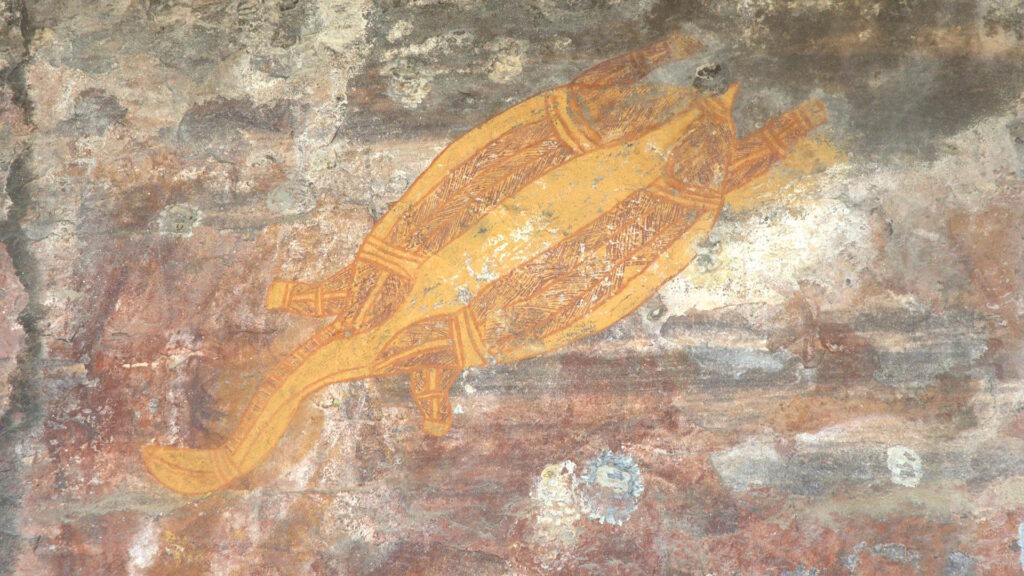
In Aboriginal Australian traditions, particularly among coastal communities, turtles feature prominently in Dreamtime stories that explain the creation of landscapes and establish cultural laws. The Rainbow Serpent, a fundamental creation being in many Aboriginal cosmologies, is sometimes depicted creating turtles along with other animals during the formation of the world. For the Yolngu people of Arnhem Land, the turtle represents an important ancestral being whose movements created features of the landscape.
Sea turtle hunting traditionally involved elaborate rituals and strict protocols to honor the spiritual significance of these animals. Rock art depicting turtles dates back thousands of years in some regions of Australia, demonstrating their longstanding cultural importance to Aboriginal peoples.
Buddhist Perspectives on Turtle Sacredness

In Buddhist traditions across Asia, turtles symbolize patience, endurance, and cosmic order. The practice of releasing captive turtles into the wild, known as “fangsheng” or life release, is considered an act of compassion that generates positive karma. In some Buddhist temples in China, Vietnam, and Thailand, sacred ponds house turtles that visitors can feed as an offering and act of merit-making. Buddhist texts sometimes use the turtle as a metaphor for the mind that must withdraw from sensory distractions (like limbs withdrawing into a shell) to achieve meditative concentration.
In certain Tibetan Buddhist traditions, the turtle appears in cosmological diagrams representing fundamental stability, with various deities and cosmic forces arranged on its back. These representations echo Hindu cosmic turtle imagery while incorporating distinctly Buddhist interpretations.
Contemporary Conservation and Sacred Turtle Protection
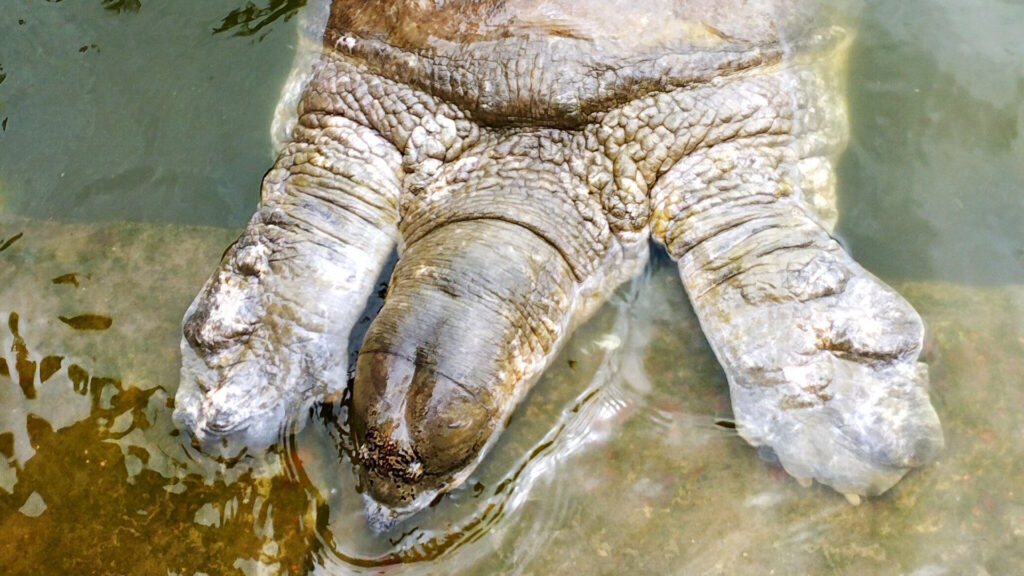
The sacred status of turtles in various cultures has increasingly intersected with contemporary conservation efforts, sometimes creating unique partnerships between religious institutions and environmental organizations. In India, the Indian Turtle Conservation Action Network works with temple authorities to protect freshwater turtles in sacred rivers and ponds while respecting their religious significance. The previously mentioned Black Softshell Turtle conservation program in Bangladesh demonstrates how religious reverence can be leveraged for species recovery.
In several Pacific Island nations, traditional taboos against disturbing certain turtle nesting beaches have been reinforced and formalized as modern conservation measures. However, challenges remain where religious uses of turtles conflict with conservation needs, requiring culturally sensitive approaches that respect both biological imperatives and cultural traditions.
The Scientific Significance Behind Turtle Veneration

While turtles’ sacred status stems primarily from cultural and spiritual traditions, certain biological characteristics may help explain why these reptiles have inspired such reverence across diverse societies. Their exceptional longevity—with some species living over 100 years—naturally associates them with concepts of immortality and ancestral wisdom. The turtle’s unique anatomy, particularly its protective shell that serves as both home and defense, provides a powerful metaphor for security and self-containment that resonates across cultures.
Their ancient evolutionary lineage, having survived virtually unchanged since the time of dinosaurs, gives turtles an aura of primordial significance and connection to earth’s earliest life. The sea turtle’s remarkable navigation abilities, returning to precise nesting beaches across vast oceans, suggests a mysterious intelligence that has contributed to their spiritual status in many maritime cultures.
Conclusion

In exploring the sacred status of turtles across world cultures, we discover not just fascinating spiritual traditions, but also insights into how humans relate to the natural world. The widespread veneration of turtles—spanning continents, religions, and millennia—suggests something universally compelling about these ancient creatures. Their physical characteristics of longevity, resilience, and distinctive form have made them powerful symbols in human consciousness.
As many turtle species now face threats from habitat destruction, pollution, and exploitation, understanding their cultural significance offers an additional dimension to conservation efforts. Perhaps by recognizing the wisdom of ancestors who saw divinity in these remarkable reptiles, modern societies might find renewed motivation to ensure turtles continue their journey through time—both as living species and as sacred symbols connecting us to cosmic understanding.



